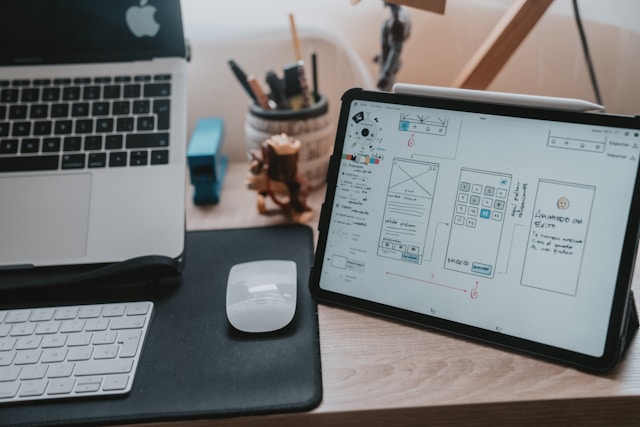In the ever-evolving landscape of digital products, UX designers walk a tightrope between technical precision and creative expression. This delicate balance is not merely a challenge but the essence of what makes exceptional user experiences possible. When executed well, this harmony creates interfaces that are both functional and delightful.
The Technical Foundation
At its core, user interface design demands precision. Pixel-perfect layouts, consistent spacing, and meticulous attention to interactive states form the bedrock of professional design work. This precision isn’t arbitrary—it serves critical functions:
- It ensures usability across devices and platforms
- It creates visual harmony that feels natural and instinctive
- It reduces cognitive load, allowing users to focus on their goals
- It builds trust through professional presentation
The structured nature of UI frameworks and design systems has revolutionized how teams approach digital products. With standardized components and interaction patterns, designers can ensure consistency while accelerating development. Yet this same standardization can sometimes feel constraining, leading to interfaces that look remarkably similar across the digital landscape.
The Creative Opportunity
Creativity in UX design isn’t about decoration or arbitrary visual flourishes. It’s about solving problems in unique ways that resonate with users on a deeper level. Creative approaches in UX might include:
- Unexpected interactions that delight without confusing
- Visual metaphors that make complex concepts immediately understandable
- Micro-animations that provide feedback and personality
- Color psychology and typography that evoke specific emotional responses
- Storytelling elements that guide users through complex journeys
The most memorable digital experiences often break certain conventions in thoughtful, purposeful ways. They surprise users without frustrating them, creating moments of joy and connection that transform functional tools into beloved products.
Finding the Sweet Spot
The tension between precision and creativity isn’t a problem to solve but a dynamic to manage. The most successful UX designers understand that these forces complement rather than contradict each other. Consider these approaches to finding balance:
- Start structured, then innovate: Build on solid UX fundamentals before introducing creative elements. Creativity works best when it enhances rather than replaces good fundamentals.
- Use the 80/20 rule: Maintain strict consistency for 80% of your interface while allowing creative expression in the remaining 20%, particularly in key moments that define your brand.
- Test creative elements rigorously: Innovation should never come at the expense of usability. Test creative approaches with real users to ensure they enhance rather than hinder the experience.
- Embrace constraint as a catalyst: Some of the most creative solutions emerge when working within tight constraints. Limited options often force designers to think more deeply about problems.
- Build creativity into your design system: Rather than treating creativity as an exception, incorporate flexibility into your design system itself, defining where and how teams can express creativity within the framework.
The Future of UX Creativity
As AI and automation increasingly handle the precision aspects of UI design, human designers will likely focus more on creative problem-solving and emotional design. The ability to infuse interfaces with personality, empathy, and unexpected delight will become even more valuable.
The most successful products of tomorrow won’t just be those that work flawlessly—they’ll be the ones that connect with users on a human level, turning functional interactions into meaningful experiences. In this future, the designers who thrive will be those who master both the science of precision and the art of creative expression, knowing exactly when and how to apply each for maximum impact.
